Motivation
KGs store facts in their graph structure. KGs embedding represents KGs in a low-dimension vector space which preserves the inherent structure of KGs.
Recent studies apply PLMs to encode text information and generate representations for long-tail and emerging entities.
KG embeddings with PLMs are usually deployed as static, which is challenging to modify without re-training.
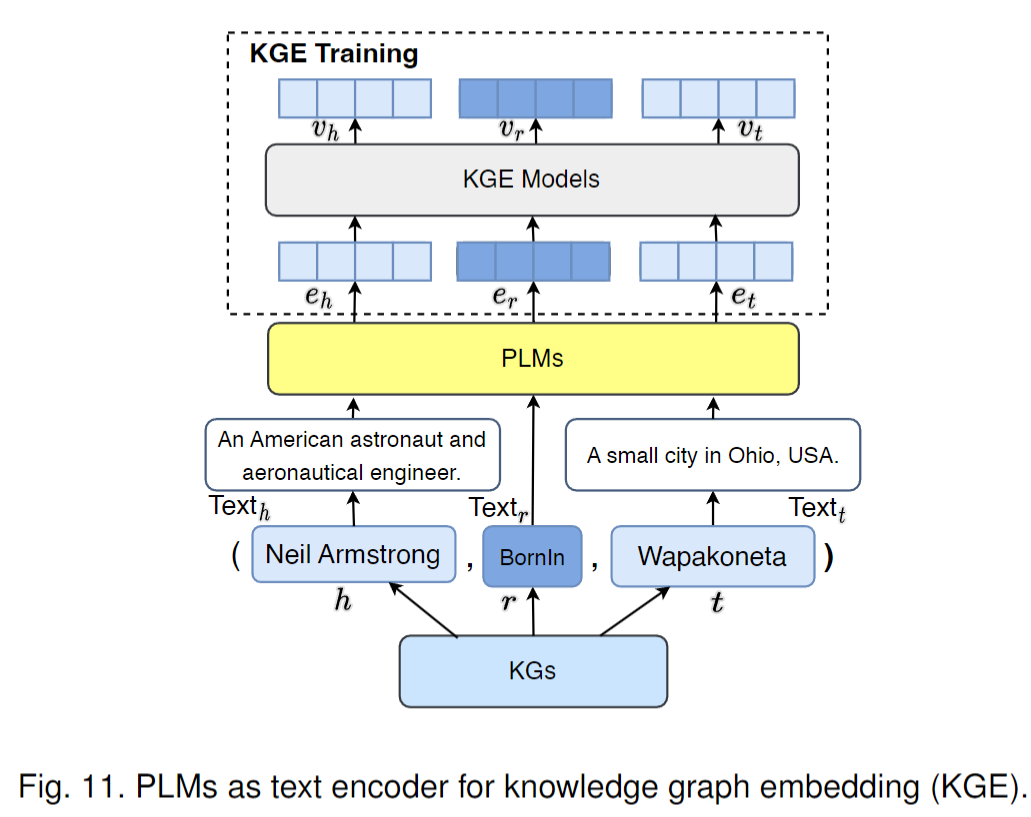
KG embeddings editing
Editing language model-based KG embeddings, which aims to enable data-efficient and fast updates to KG embeddings for a small region of parametric space without influencing the performance of the rest.
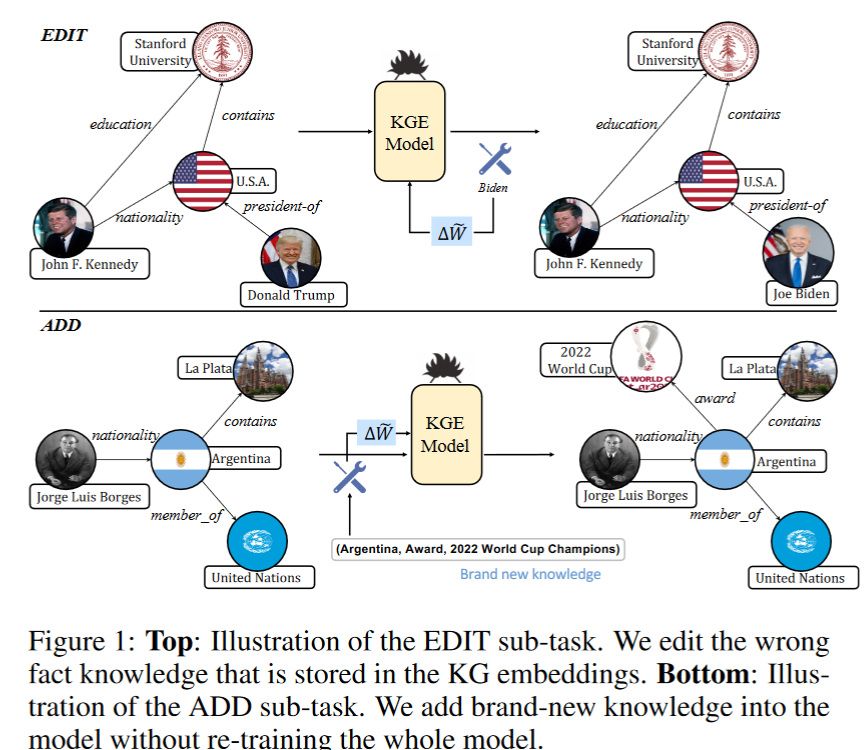
KG embeddings editing= learning-to-update problems.
Contributions
- Propose a new task of editing language model-based KG embeddings and present twodatasets.
- Introduce the KGEditor that can efficiently modify incorrect knowledge or add new knowledge.
Methodology
Task Definition
KG: $G=(\mathcal{E},\mathcal{R},\mathcal{T})$
EDIT task: $(h,r,y,a)$ or $(y,r,h,a)$, $y$ denote the wrong or outdated entity, $a$ denote the target entity we want to replace.
Example:1
<Barack Obama, president of, U.S.A.> => <Barack Obama, president of, U.S.A., Joe Biden>
ADD task: Implement new knowledge into the model
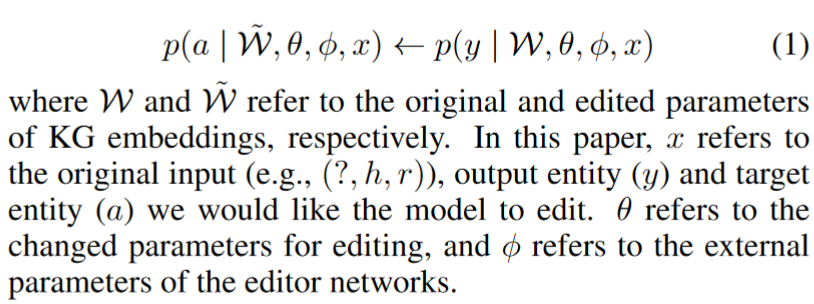
Evaluation principles:
Knowledge reliability: edited or newly added knowledge should be correctly inferred=> Knowledge graph completion metrics: Success\@1
Knowledge locality: editing KG embeddings will not affect the rest of other facts=> Retain Knowledge (RK\@k).

The entities predicted by the original model are still correctly inferred by the edited model.
Edited Knowledge Rate of Change and Retaining Knowledge Rate of Change
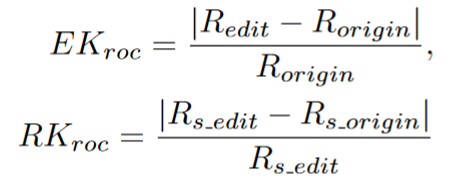
Knowledge efficiency: modify a model with low training resources=>number of tuning parameters
Datasets

Pre-process: Remove simple facts can be easily predicted by PLMs.
Edit task:
- Training: KGs generated by link prediction model (could contain error)
- Testing: original KGs
ADD task:
- Training: original KGs.
- Testing: inductive new facts.
PLMs-based KGE
Finetuning KGE
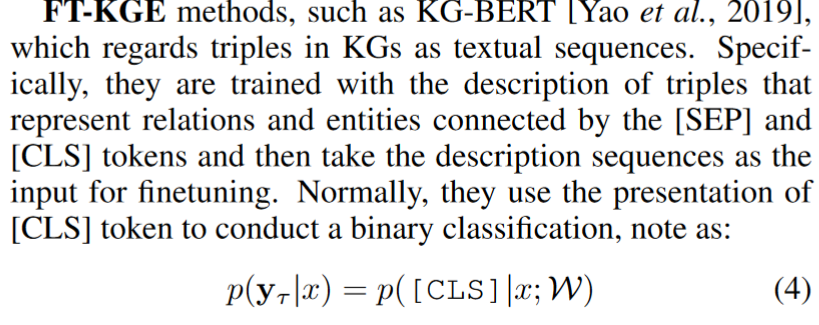
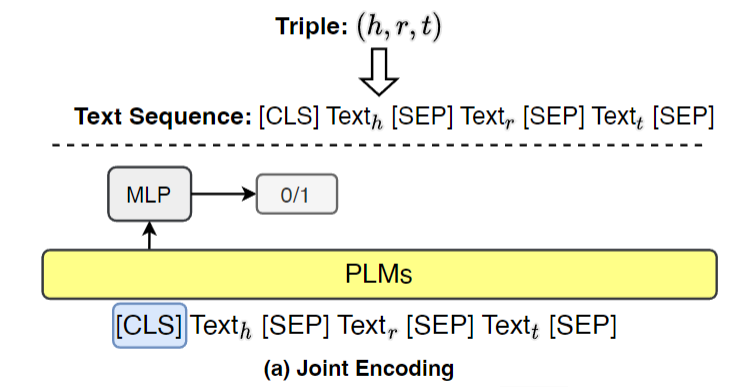
Prompt tuning KGE

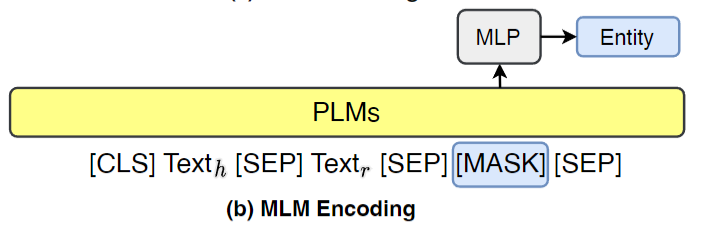
KGE Editing baselines
External model-based editor
Edit wrong knowledge in language models by utilizing a hyper network to predict the weight update during inference.
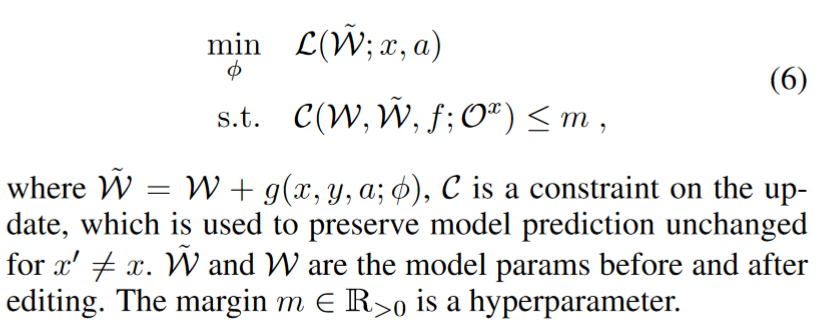 Cons: Need to fine tune a large number of parameters.
Cons: Need to fine tune a large number of parameters.
Additional parameter-based editor
Modify the output by another small model.

Cons:Poor in performance.
KGE editor

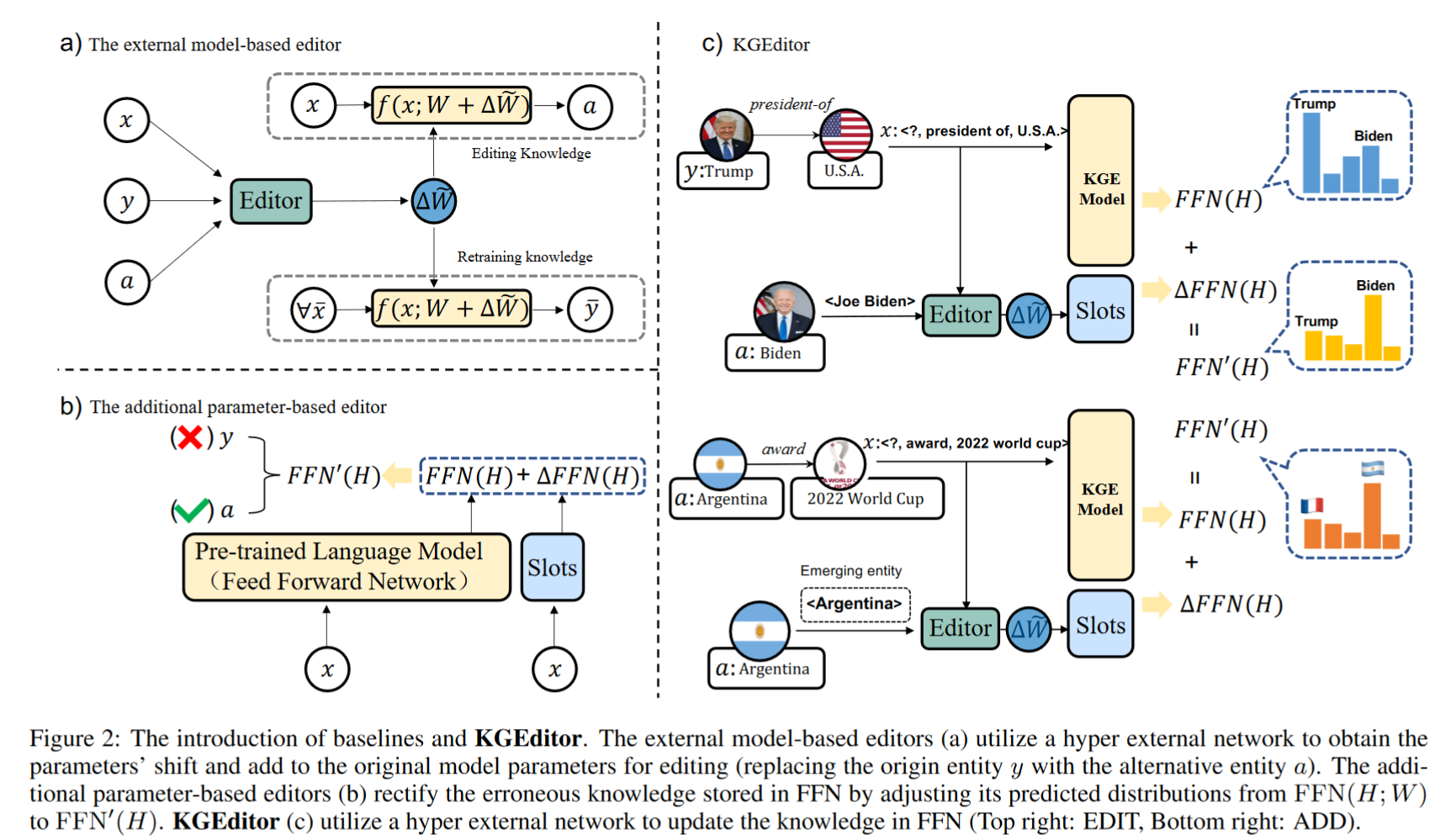
Results

